Zikai Chen
NAST: A Non-Autoregressive Generator with Word Alignment for Unsupervised Text Style Transfer
Jun 04, 2021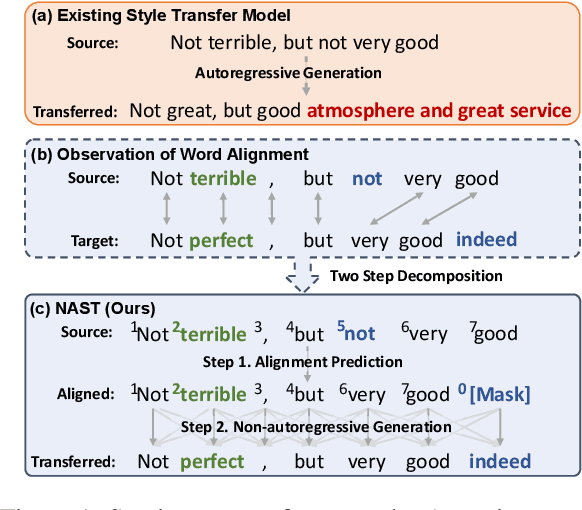


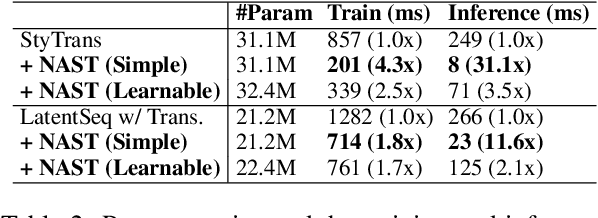
Abstract:Autoregressive models have been widely used in unsupervised text style transfer. Despite their success, these models still suffer from the content preservation problem that they usually ignore part of the source sentence and generate some irrelevant words with strong styles. In this paper, we propose a Non-Autoregressive generator for unsupervised text Style Transfer (NAST), which alleviates the problem from two aspects. First, we observe that most words in the transferred sentence can be aligned with related words in the source sentence, so we explicitly model word alignments to suppress irrelevant words. Second, existing models trained with the cycle loss align sentences in two stylistic text spaces, which lacks fine-grained control at the word level. The proposed non-autoregressive generator focuses on the connections between aligned words, which learns the word-level transfer between styles. For experiments, we integrate the proposed generator into two base models and evaluate them on two style transfer tasks. The results show that NAST can significantly improve the overall performance and provide explainable word alignments. Moreover, the non-autoregressive generator achieves over 10x speedups at inference. Our codes are available at https://github.com/thu-coai/NAST.
Stylized Dialogue Response Generation Using Stylized Unpaired Texts
Sep 27, 2020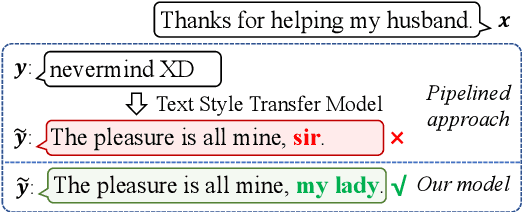
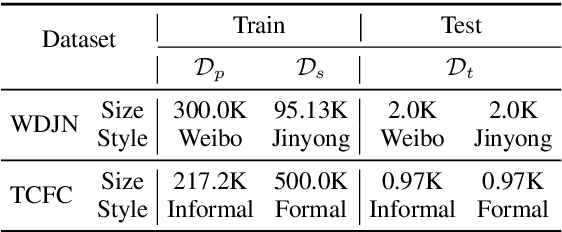
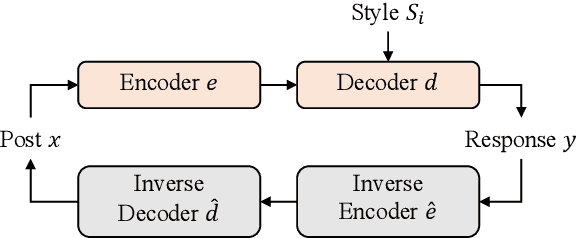

Abstract:Generating stylized responses is essential to build intelligent and engaging dialogue systems. However, this task is far from well-explored due to the difficulties of rendering a particular style in coherent responses, especially when the target style is embedded only in unpaired texts that cannot be directly used to train the dialogue model. This paper proposes a stylized dialogue generation method that can capture stylistic features embedded in unpaired texts. Specifically, our method can produce dialogue responses that are both coherent to the given context and conform to the target style. In this study, an inverse dialogue model is first introduced to predict possible posts for the input responses, and then this inverse model is used to generate stylized pseudo dialogue pairs based on these stylized unpaired texts. Further, these pseudo pairs are employed to train the stylized dialogue model with a joint training process, and a style routing approach is proposed to intensify stylistic features in the decoder. Automatic and manual evaluations on two datasets demonstrate that our method outperforms competitive baselines in producing coherent and style-intensive dialogue responses.
 Add to Chrome
Add to Chrome Add to Firefox
Add to Firefox Add to Edge
Add to Edge